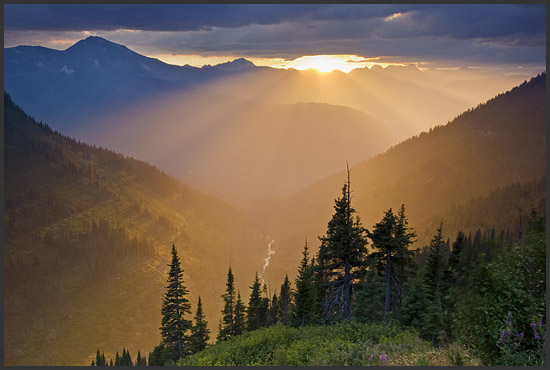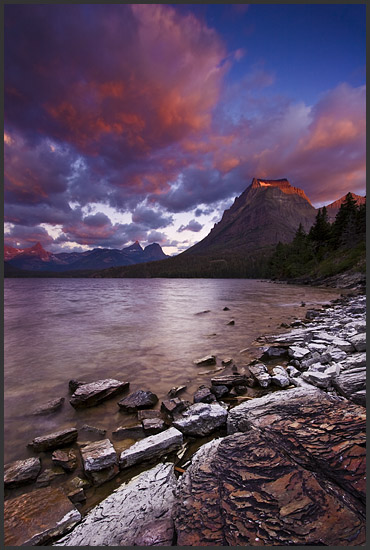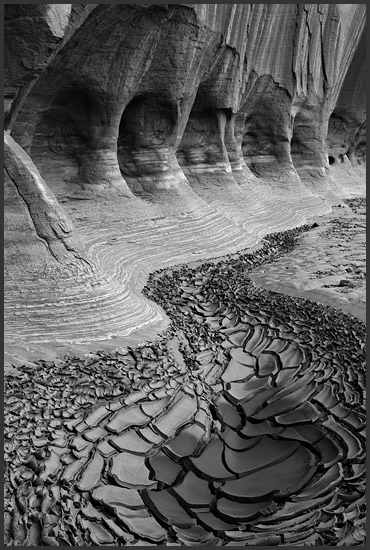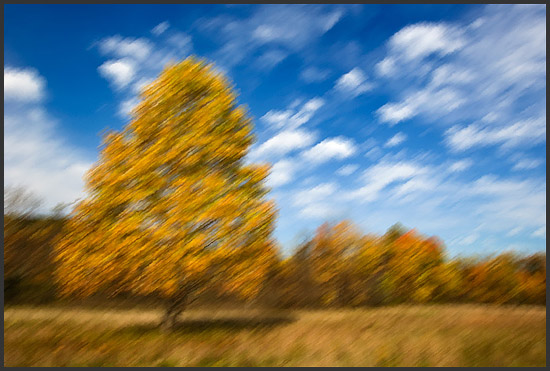In my mind, every photograph is a collection of the elements I began to notice in my childhood. Before I release the shutter, I find myself taking each into account. Light, color, texture, and detail are separate entities working together to create a picture. The viewer may not take the image apart the way I do in my mind, but the careful juxtaposition of these elements makes a difference just the same. If I can convey a sense of the place by accentuating one element or a combination of elements, than I have succeeded in my goal.
Light is – of course – the basic building block for every photograph. Without it, photography could not exist. In many cases, the primary focus of my image is a stunning sky or a carefully lit element. When a spectacular sunset presents itself, the focus of my work may be on the light. It is my goal, in that case, to capture the full dynamic range and work with it to the best of my ability. Other elements become secondary (though they are certainly not ignored) since I want my viewer to notice the light first… and details later.

In other circumstances, I might choose color as the main element – the component with which I hope to hold the viewers attention. If conditions are right, early morning light begins to play on clouds just before and after sunrise – at this time of day, it is sometimes possible to capture dramatic colors in the sky. If I pay attention to the physical properties of light, I can often guess where the most dramatic effect will occur – and I can structure my photograph to make the most of the color if it does appear. Soft morning light enhances detail as well, so I often try to create a composition that combines color and texture in a pleasing composition.

Light and color are often the most intense features in a photograph, but in some cases, these elements can be distracting. If I wish to focus attention on texture instead, I must be as aware of the light as ever. Blown highlights or shadows without detail can pull the viewer’s eye away from the details I want to present. I must be able to use the light to accentuate the textures in the final image – without becoming distracting. I sometimes wait for hours until the light is soft and directional in order to bring out the subtle details that would be hard to see in harsher light.
I am a particular lover of black and white photography because it allows me to remove color as a distracting element – thereby directing the viewers focus to detail, texture, or contrast. Competing colors in a photograph sometimes hide the more subtle textures that drew the photographer’s eye. Removing the riot of color removes that distraction completely, leaving the viewer free to notice and appreciate the textures – no longer so subtle.

Photo editing programs allow photographers an additional freedom. Filters and effects provide an ever-expanding arsenal of tools that were unavailable in traditional darkrooms. Rather than simply replicating a scene, the digital artist can now manipulate a photograph in order to accentuate any of the elements of the photo.
The following photo was taken on a beautiful autumn morning in Ohio. The sky was a stunning blue – patterned with a sprinkling of clouds. I waited until the sunlight was softened by a cloud and then photographed the scene. Although the location was truly beautiful, the photograph didn’t have the impact I wanted. Its colors were too muted, and the light – despite the soft cloud covering the sun – was too harsh. While writing this article, I chose to attempt a manipulation of the photograph in order to illustrate my point. It was my goal with this image to present an image that brings to mind the color and beauty of autumn. To that end, I used a series of filtering and blurring effects to create an image that looks more like a painting than a photograph. Color and light become the central elements of the image, and detail is merely suggested by shadow and highlight.

Each of my photographs can be broken down into its individual components: color, light, texture, and detail – or the lack of any of these elements. My photography has been profoundly influenced by my own experiences with light and lenses. I continue to separate light from texture in my mind as I look through my viewfinder, and each photograph is impacted by the way I see the light. |